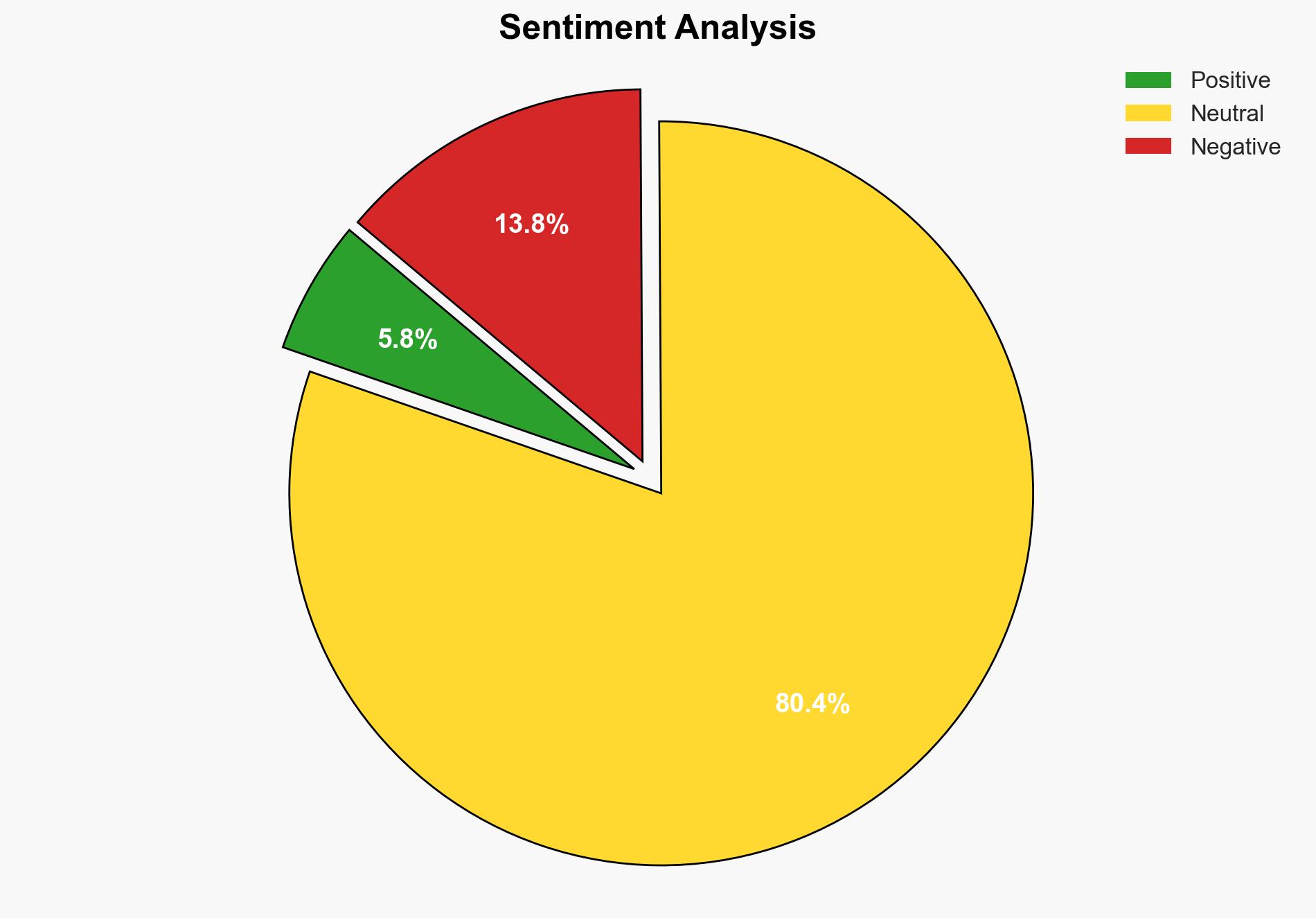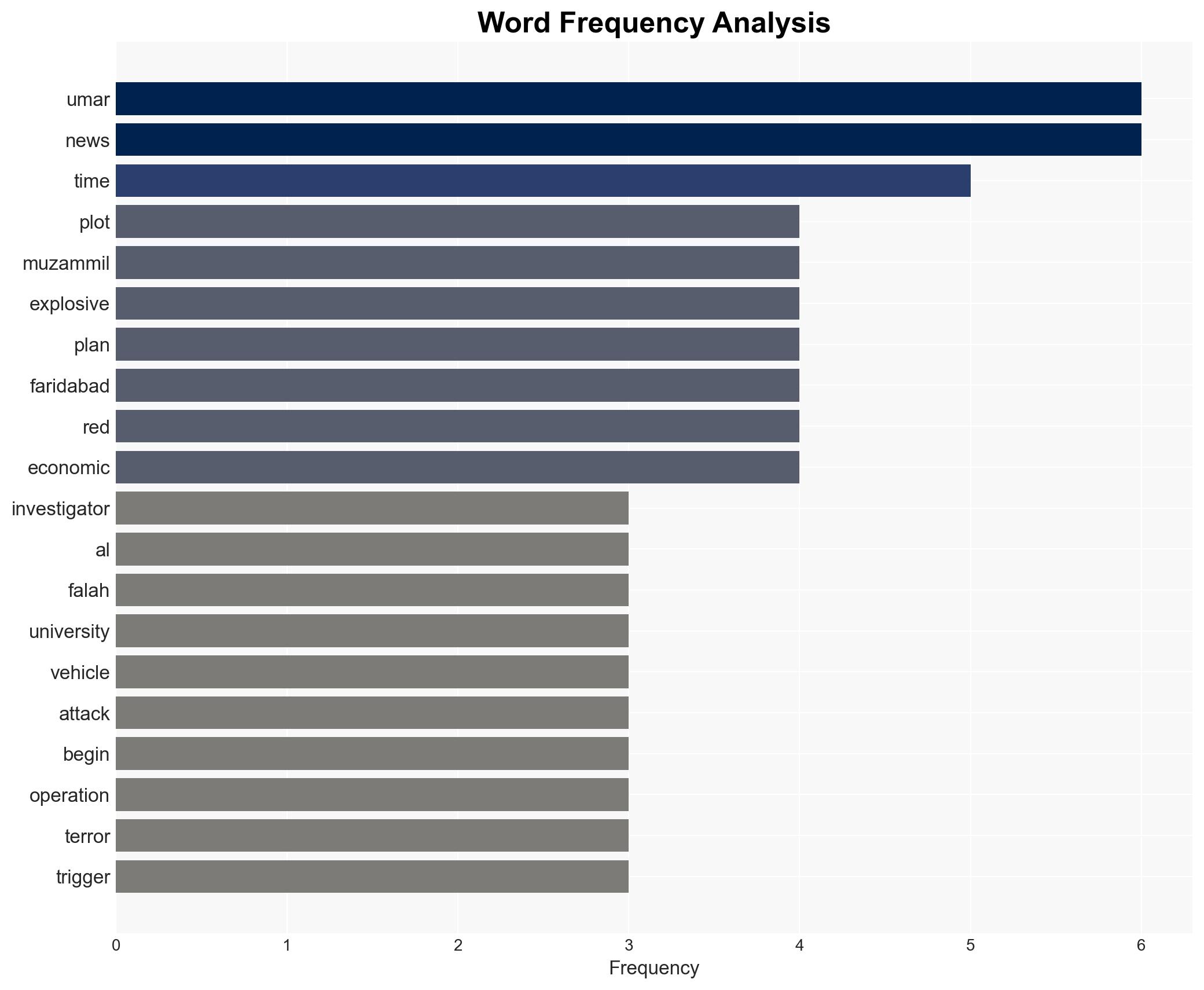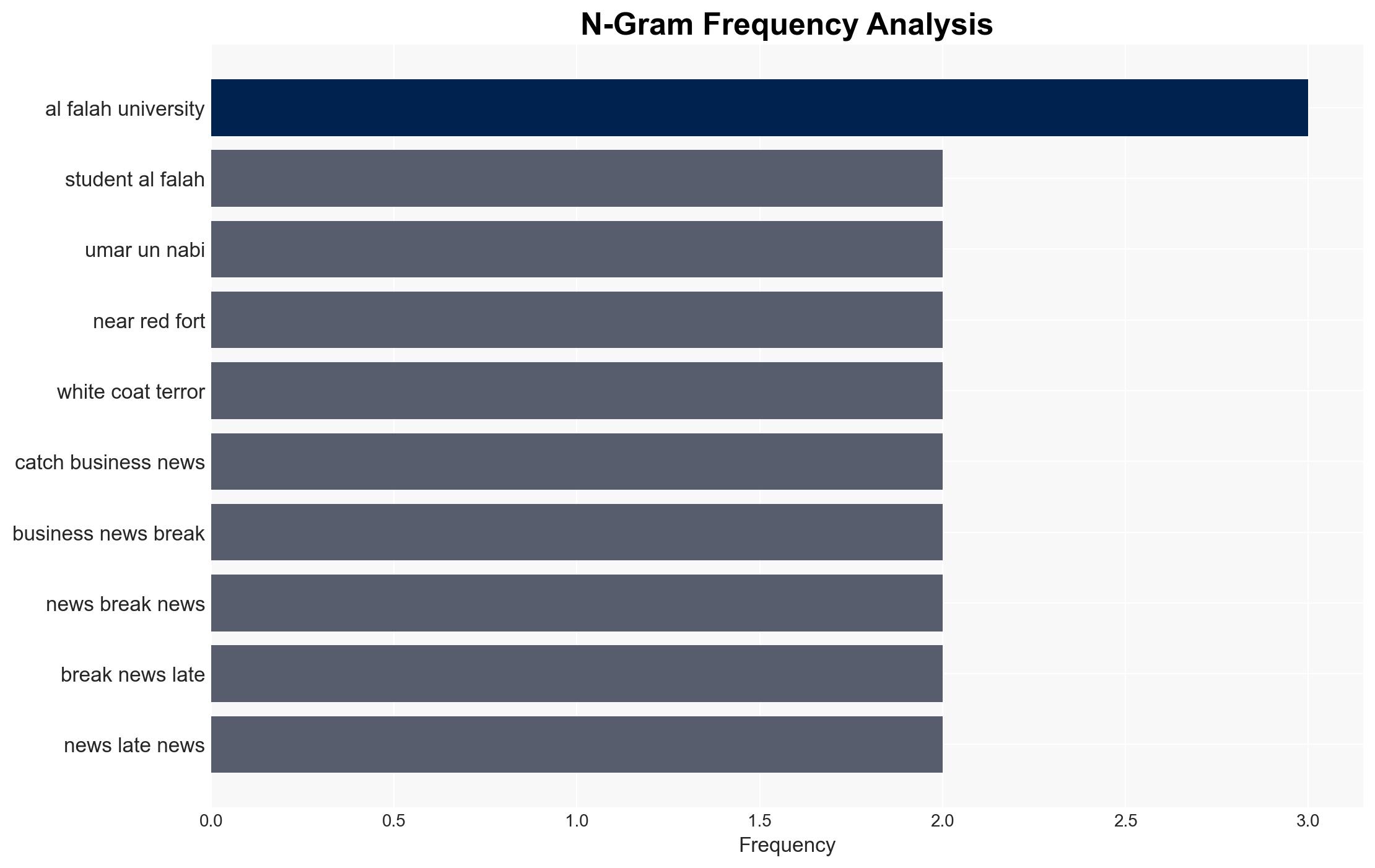Likely close shave for many as deadly terror plot falls apart at last moment – The Times of India
Published on: 2025-11-13
AI-powered OSINT brief from verified open sources. Automated NLP signal extraction with human verification. See our Methodology and Why WorldWideWatchers.
Intelligence Report: Likely close shave for many as deadly terror plot falls apart at last moment – The Times of India
1. BLUF (Bottom Line Up Front)
The disruption of a sophisticated terror plot targeting multiple Indian cities, including Delhi and Ayodhya, highlights the persistent threat from radicalized individuals with technical expertise. The most supported hypothesis is that the plot was primarily orchestrated by a network with transnational connections, leveraging encrypted communications and exploiting local academic institutions for cover. Confidence Level: Moderate. Recommended actions include enhancing surveillance on academic institutions, increasing cooperation with international intelligence agencies, and bolstering cybersecurity measures to monitor encrypted communications.
2. Competing Hypotheses
Hypothesis 1: The terror plot was orchestrated by a transnational network with direct links to known terrorist organizations such as Jaish-e-Mohammed and Ansar Ghazwat-ul-Hind, utilizing local operatives for execution.
Hypothesis 2: The plot was primarily a domestic operation with limited external support, driven by radicalized individuals within India, using international connections mainly for ideological guidance and not operational support.
Hypothesis 1 is more likely due to evidence of Umar’s travel to Turkey, meetings with handlers, and the use of encrypted communications, indicating a structured and externally supported operation.
3. Key Assumptions and Red Flags
Assumptions: The assumption that Umar’s travel to Turkey was for operational planning rather than personal reasons; the belief that encrypted communications were solely for operational purposes.
Red Flags: The sudden disappearance of Umar and the premature detonation of the IED could indicate potential internal sabotage or miscommunication within the terror cell.
Deception Indicators: The use of academic institutions as cover suggests potential deception in recruitment and radicalization processes.
4. Implications and Strategic Risks
The plot’s exposure underscores the risk of radicalization within educational institutions and the potential for educated individuals to engage in terrorism. The use of encrypted communications poses a significant challenge for intelligence agencies. There is a risk of retaliatory actions by the terror network, potentially targeting high-profile events or locations. The incident may also strain India-Turkey relations if further evidence of Turkish involvement emerges.
5. Recommendations and Outlook
- Enhance monitoring of academic institutions for signs of radicalization and recruitment activities.
- Strengthen international intelligence cooperation, particularly with countries like Turkey, to track transnational terror links.
- Invest in advanced cybersecurity tools to penetrate encrypted communication platforms used by terror networks.
- Best-case scenario: The dismantling of the terror network leads to increased security and reduced threat levels.
- Worst-case scenario: Retaliatory attacks occur, leading to significant casualties and heightened communal tensions.
- Most-likely scenario: Increased security measures and intelligence cooperation prevent immediate threats, but the underlying radicalization issue persists.
6. Key Individuals and Entities
Dr. Umar Un Nabi, Dr. Muzammil Ganaie, Jaish-e-Mohammed, Ansar Ghazwat-ul-Hind, Al Falah University.
7. Thematic Tags
Regional Focus: India, Transnational Terrorism, Cybersecurity, Radicalization, Intelligence Cooperation
Structured Analytic Techniques Applied
- Causal Layered Analysis (CLA): Analyze events across surface happenings, systems, worldviews, and myths.
- Cross-Impact Simulation: Model ripple effects across neighboring states, conflicts, or economic dependencies.
- Scenario Generation: Explore divergent futures under varying assumptions to identify plausible paths.
- Network Influence Mapping: Map influence relationships to assess actor impact.
Explore more:
Regional Focus Briefs ·
Daily Summary ·
Methodology





